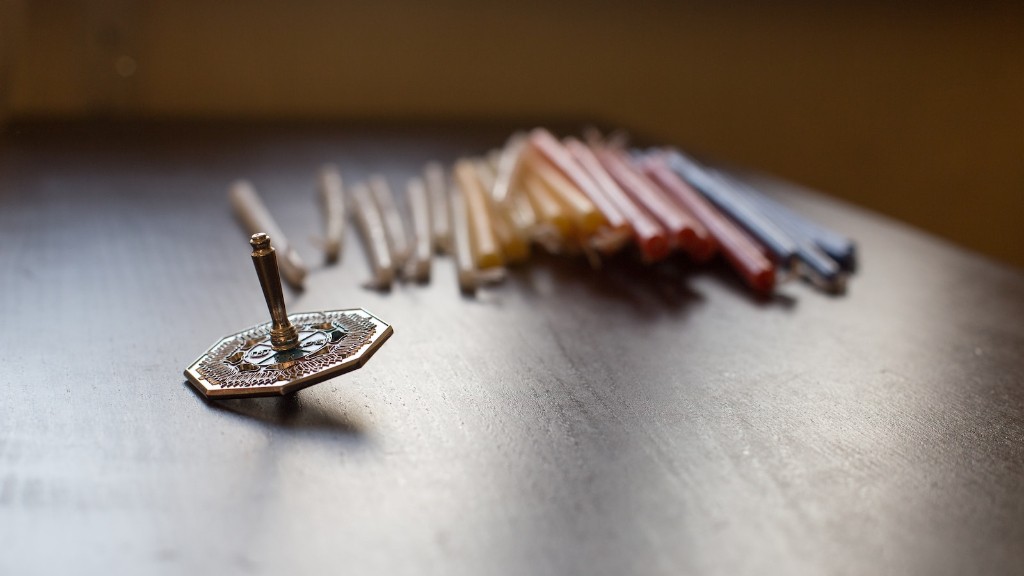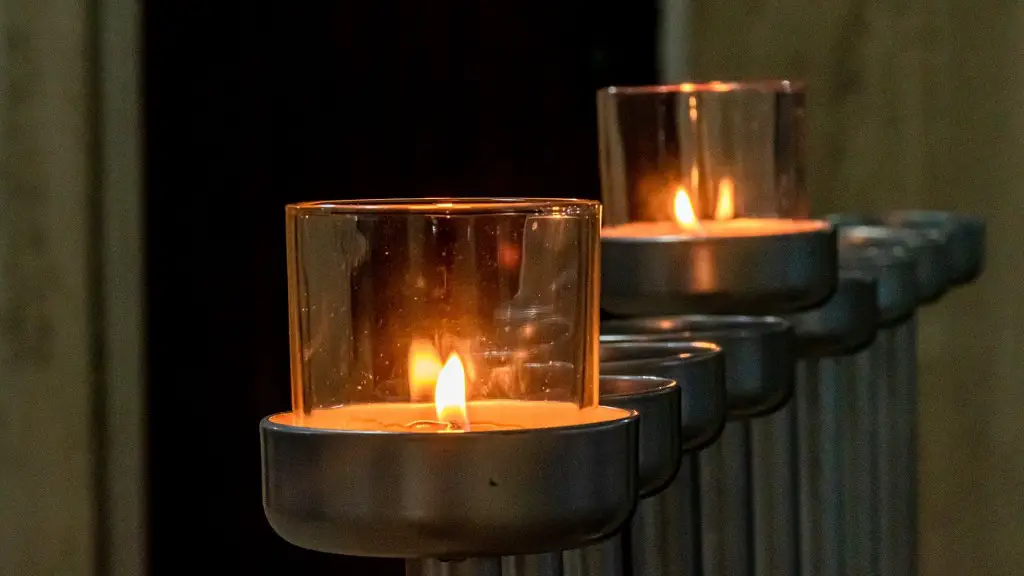History of Hanukkah in Judaism
Hanukkah is a Jewish celebration that has been going on for centuries. It is sometimes referred to as the Festival of Lights or the Festival of Dedication and falls on the twenty-fifth day of Kislev (December), which may last eight days. It celebrates the re-dedication of the Second Temple in Jerusalem at the time of the Maccabean Revolt against the Seleucid Empire in the 2nd century BC. According to the story, when the Maccabees rededicated the Temple, there was only enough ritual oil left to light the menorah for one night. Miraculously, the oil lasted for eight days and nights, until more could be procured. This miracle is the core of the Hanukkah traditions. To remember the miracle, Jews around the world light a nine branch candelabrum, called the menorah, for each of the eight nights of the holiday.
In modern day, Hanukkah is still celebrated and has taken on some of the commercial aspects of Christmas. Hanukkah gifts are exchanged, and a special game of chance, the dreidel game, is traditionally played. Besides the family celebrations, a multitude of Hanukkah dance parties and cultural events take place.
One of the ways that Hanukkah is commemorated is by sharing stories about the holiday. Many of these stories emphasize the significance of the Maccabean Revolt and the miracle of the oil, while others recount the struggles of the Jewish people against oppression throughout history. The traditions of Hanukkah are also enriched with stories from the Talmud and Midrash, Jewish commentaries on the Torah.
In addition to the stories, the rituals associated with Hanukkah also provide a tangible way for Jews to commemorate the holiday. Since the holiday is based on the lighting of the menorah for eight days, lighting its candles is the pinnacle of the holiday. On each night of Hanukkah, an additional candle is lit, starting with one on the first night and increasing to eight on the eighth night. By the end of the festival, the menorah is completely lit.
Historical Background of Hanukkah
Hanukkah was originally a minor holiday, and it wasn’t until many years after its founding that it began to acquire its current festive status. While its origin goes back to the Maccabean Revolt in the 2nd century BC, its celebration was transformed functionally and symbolically over time. After the fall of the Second Temple, Jews have continued to celebrate Hanukkah in various forms.
During the Roman occupation of Palestine, there were numerous attempts to suppress the Jewish population, and many forced conversions took place. Despite this, a successful, organized rebellion against the Seleucid Empire ultimately established an independent Jewish kingdom that lasted for hundreds of years, reinstating religious freedom for Jews. This set the stage for the celebration of Hanukkah.
The Jewish revolt was eventually suppressed by the Roman Empire in 70 CE, which led to the destruction of the Second Temple and the exile of many Jews from Jerusalem and Judea. As a result, many of the rituals and religious observances associated with Hanukkah were lost or modified, leading to the current celebration of the holiday.
The Symbolism of Hanukkah
The lighting of the menorah on Hanukkah is a physical and symbolic reminder of the Maccabean Revolt and the victory of the Jewish people against the Seleucid Empire. It is also a reminder of the rededication of the Second Temple and the miracle of the oil.
The most important symbol of Hanukkah is the menorah, which is an eight-branched candelabrum that is lit each night of the holiday. It is taken from the Temple and is a representation of the original Temple Menorah, which was made of pure gold. The menorah is lit on the first night of Hanukkah and an additional candle is lit each night until all eight candles are lit. This ritual serves as a reminder of the miracle of the oil, and each time a new candle is lit, a prayer is said in celebration of the miracle.
The menorah is also a reminder of the importance of light in Jewish tradition. The mitzvah (good deed) of lighting the menorah is a reminder of the commandment to be a spiritual beacon of light in the world. It represents the light of Torah and knowledge that Jews must bring to others.
Modern Celebrations of Hanukkah
Today, Hanukkah is a very popular holiday. It is celebrated with holiday decorations, parties, and traditional foods. Jews all over the world celebrate the holiday by lighting the menorah and enjoying fried foods, such as latkes (potato pancakes) and sufganiyot (doughnuts).
Modern celebrations of the holiday often involve exchanging gifts. In the United States, Hanukkah has taken on a commercial aspect, and Hanukkah gifts are popular among Jews and non-Jews alike. Children in particular receive gifts each day of Hanukkah, while adults typically exchange gifts on the first and eighth nights.
The dreidel game is a popular Hanukkah tradition. The game is traditionally played with four sided tops and is usually played with chocolate coins or coins as stakes. The sides of the dreidel are inscribed with the Hebrew letters nun, gimel, hei, and shin, which spell out the phrase “a great miracle happened here.” The idea behind the game is to commemorate the miracle of Hanukkah.
The Relationship Between Hanukkah and Christmas
The two holidays often coincide, leading to many Jews in countries with a large Christian population to exchange presents with their non-Jewish friends. However, Hanukkah is a religious holiday and is never celebrated in the same way as Christmas.
Unlike Christmas, which is a celebration of the birth of Jesus, Hanukkah is not a Bible-based holiday. For Jews, Hanukkah is a commemoration of the rededication of the Temple with the miracle of the oil. Jews take this opportunity to ponder the power of faith and stand up to oppression.
Political Significance Of Hanukkah
Today, Hanukkah is often viewed as a secular holiday and a time of celebration and joy. But it originally began as a military revolt, and it is important to remember this when celebrating the holiday.
The celebration of Hanukkah is a reminder of the importance of standing up for what one believes in, even in the face of opposition, and of adhering to the principles of one’s faith. The holiday is a call to resist oppression and a reminder of the power of unity and strength of spirit.
Hanukkah is also a symbol of hope in difficult times. It is a reminder that miracles can happen and that light will eventually prevail over darkness. Jews around the world light the menorah as a symbol of this hope and as a reminder of their shared history and culture.
Cultural Expressions Of Hanukkah
Hanukkah has become an important part of Jewish culture, and the holiday’s traditions have been embraced by many Jews around the world. It has inspired poets, authors, and theologians, and many songs and stories have been written about it.
In Israel, Hanukkah is an especially important holiday, and it is celebrated with great enthusiasm. In modern times, the holiday has become a way to remember the struggle of Jews against oppression throughout history and to celebrate the resilience of the Jewish people. It is a time of reflection and celebration, and a time to share traditions with family and friends.
The Hanukkah songs and stories are an important part of the holiday, and they are often shared at holiday celebrations. Hanukkah songs often have themes of freedom, resilience, and hope and can be heard in Jewish communities around the world. They are a reminder of the struggles Jews have faced and a celebration of their victory against seemingly insurmountable odds.
The Cost Of Celebrating Hanukkah
Though the traditions and rituals associated with Hanukkah can be shared and enjoyed by many, these celebrations come at a cost. During Hanukkah, people often spend money on decorations, gifts, and food. In some cases, these costs can be prohibitive, and families have to look for ways to celebrate the holiday while being mindful of their budget.
It is important to remember the ritual of Hanukkah and to balance it with the need to be cost-conscious. This can be done by participating in affordable versions of traditional Hanukkah activities. Reading stories, playing board games, and setting aside time for family dinners are all great ways to celebrate Hanukkah without breaking the bank.
In addition, there are many organizations that offer simple and inexpensive ways to celebrate Hanukkah. Organizations such as Chabad, Hillel International, and Repair the World offer programs and activities that are tailored to make the holiday accessible to all.
Religious Meaning Of Hanukkah
The main way that Jews celebrate Hanukkah is by lighting the menorah and saying blessings. This is symbolic of their faith and commitment to their beliefs. It is also a reminder of the miracle of the oil, which is an important part of the Hanukkah story.
The menorah is a reminder of the importance of light in Jewish tradition. For Jews, the menorah serves as a moral and spiritual guide and is a symbol of faith and hope. It is also a reminder of God’s presence and of a covenant between God and the Jewish people.
Hanukkah is a time for reflection and celebration; a time to remember the struggles of the Jewish people and to celebrate their victory. It is also a time to remember the power of faith and to honor the resilience of the Jewish people.

